"Portrait Of Lady Mary Capel, Countess Of Essex In Yellow Dress C.1698, Oil On Canvas Painting"
This portrait depicts an elegant, aristocratic women wearing a yellow silk dress with white chemise and a red mantle elegantly draped around her body. By tradition the portrait represents Mary Capel, Countess of Essex. Born Lady Mary Bentinck in 1679, she was the daughter of William Bentinck, 1st Earl of Portland, a Dutch and English nobleman who became in an early stage the favourite of stadtholder William, Prince of Orange (the future King of England) and his wife Anne Villiers (died 1688).Lady Mary's maternal grandparents were Sir Edward Villiers and Lady Frances Howard, daughter of the 2nd Earl of Suffolk and his wife, Lady Elizabeth Home (died 19 August 1633), daughter of the 1st Earl of Dunbar. Through her grandfather, Sir Edward Villiers, she descended from Sir Oliver St. John and Margaret Beauchamp, mother to Lady Margaret Beaufort. Lady Mary's paternal grandparents were Bernard Bentinck, 6th Baron Bentinck of the Netherlands (died 29 July 1668), a descendant of an ancient and noble family of Guelders and Overijssel, and his wife Anne van Bloemendale (died 30 March 1685). The Villiers family exploded onto the Royal scene in 1614 when George, later Duke of Buckingham, caught the roving eye of James I and it remained there for more than a hundred years.
Mary is one of the Hampton Court Beauties who was painted by Sir Godfrey Kneller for Queen Mary II and as such would have been a well-known individual in her time. The notoriety of these “Beauties” meant that there was a strong demand for their image and several paintings would have existed.
In 1692 Lady Mary married the equally beautiful Lt. General Algernon Capel (1670-1710), 2nd Earl of Essex and the couple had three children. His father Arthur Capel had been implicated in the Rye House Plot to assassinate Charles II and his Catholic brother James Duke of York and secure the succession of Protestant James, Duke of Monmouth, the eldest of Charles’s illegitimate sons. Arrested at the family seat Cassiobury Park, Arthur was taken to the Tower of London where four days later he was discovered dead in his chamber. Although it was widely believed he had been murdered, the coroner’s verdict was suicide.
Algernon joined Mary at Court where he held the office of Gentleman of the Bedchamber to William. He served as Colonel and Lieutenant General in the 4th Dragoons, was Constable of the Tower of London and Lord Lieutenant of Hertfordshire and in 1708 a Privy Councillor. He was a member of the Kit-Cat Club, a gentleman’s club patronised by the movers and shakers of the 18th century with a Whig allegiance. The members were famously painted by Godfrey Kneller.
Her husband died in 1710 and she subsequently married Rt. Hon. Sir Conyers Darcy (died 1758) who was a son of Hon. John Darcy (1659–1688) and Bridget Sutton, in 1714. At this point she became known as Lady Mary Darcy until her death in 1726.
The portrait has been rendered in a painterly style; the treatment of the crip white drapery is exquisite, and the texture of the quickly applied brushstrokes in the yellow drapery are still pleasingly visible, after its circa 300 years of age. Sadly, this is all too often not the case in many works of this age. Held in a good carved period frame with presentation label.
Sir Godfrey Kneller (1646-1723) dominates our understanding of British portraiture at the turn of the seventeenth century. With Van Dyck, Lely and Reynolds, his name has become synonymous with the visual interpretation of British history – not least because he painted almost every person of prominence in forty years of British public life. This reputation was well-deserved, and although Kneller's age embraced many accomplished painters - John Closterman, for example, Jonathan Richardson the Elder, or Michael Dahl- none came close to Kneller in immediate fame, or in such instant association in the popular mind with the exercise of portraiture. Kneller is remembered for having painted ten ruling sovereigns, including every reigning British monarch from King Charles II to King George I.
Born in Germany but trained in Amsterdam, he studied in Italy before moving to England in 1676. He ran a large, busy, and successful studio in London and employed many assistants thereby establishing a routine that enabled a great number of works to be produced. His name became synonymous with British portraiture at the time and he rose to great notoriety; and there were countless other artists that strove to emulate his style. He received a knighthood from the King, an honour that had never been given to an artist. He died of a fever in London in 1723 and a memorial was erected in Westminster Abbey.
Measurements: Height 95cm, Width 82cm framed (Height 37.5”, Width 32.25” framed)











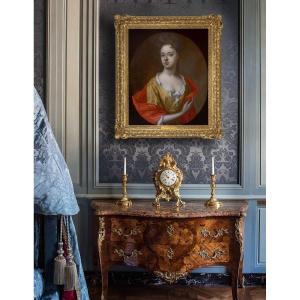









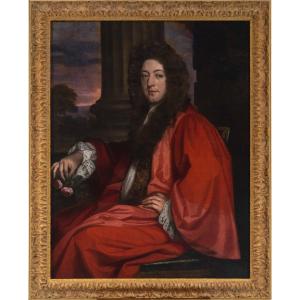
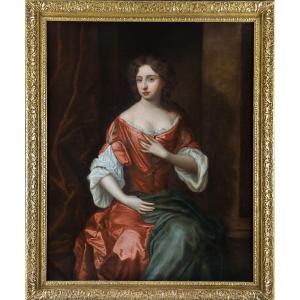
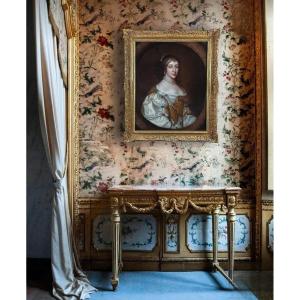
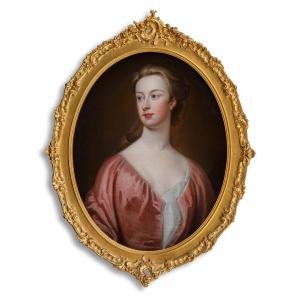







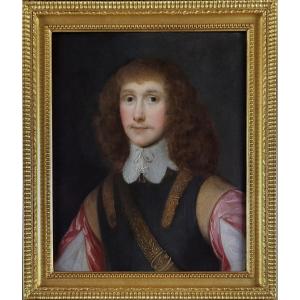
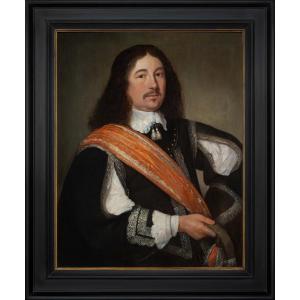
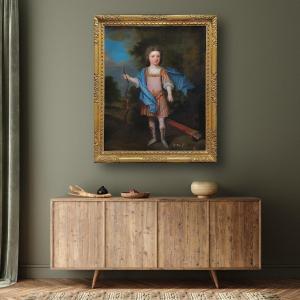





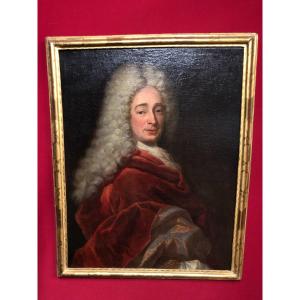




 Le Magazine
Le Magazine Rivista Artiquariato
Rivista Artiquariato TRÉSORS magazine
TRÉSORS magazine